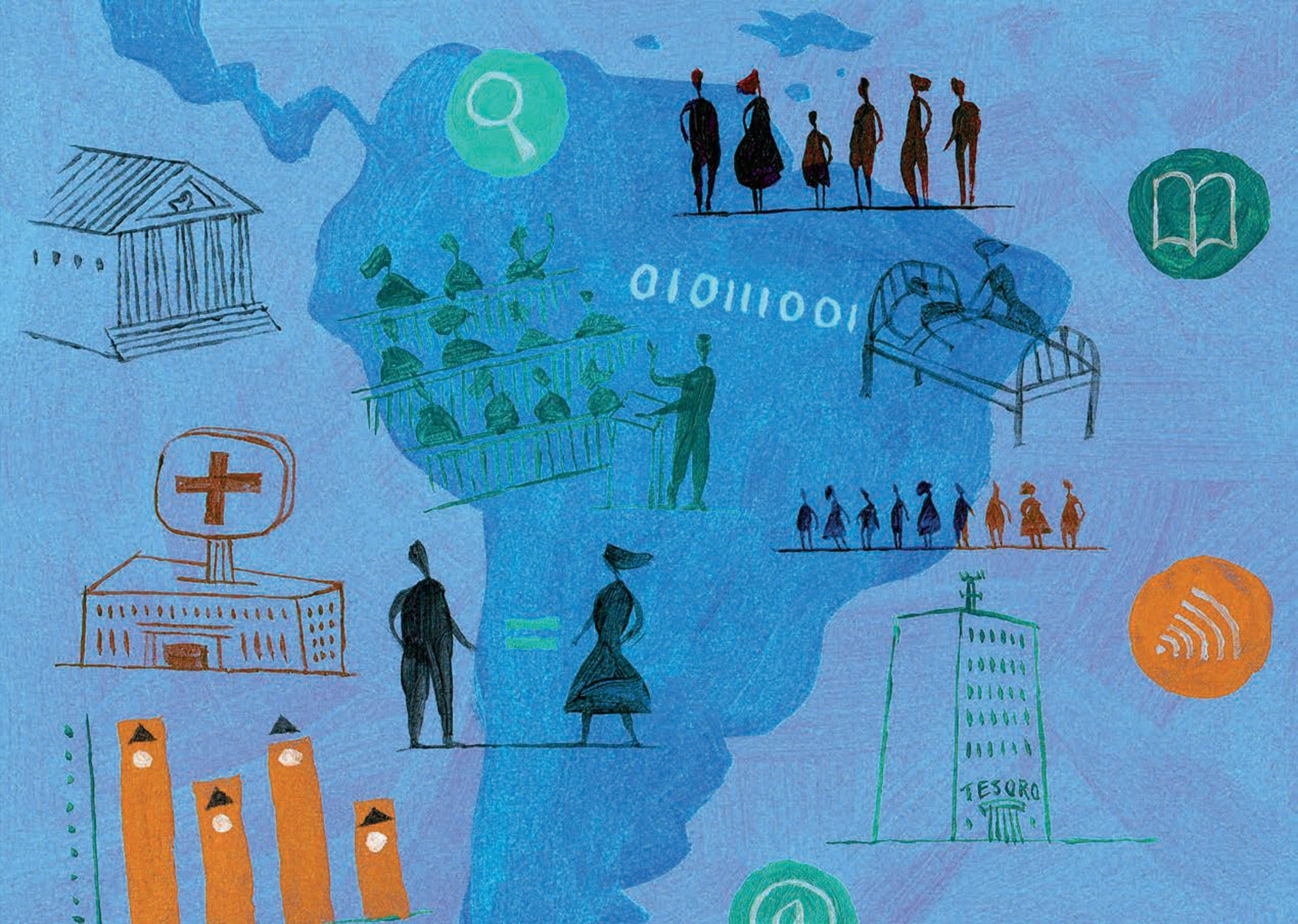In order to carry out their main functions (e.g. providing individual and collective goods and services to the population), governments spend their resources in various ways: by making transfers (e.g. subsidies and social benefits), by purchasing goods and services (e.g. vaccines for hospitals), by paying their employees, and by making investments, among others. Disaggregating expenditures by economic transaction allows disentangling government priorities and commitments, as well as its margin of manoeuvre for modifying the allocation of public funds.
In 2017, LAC countries for which data are available allocated 29.7% of their expenditures to social benefits (e.g. pensions, conditional cash transfers). This represents an increase of 9.2 p.p. since 2007. By comparison, OECD countries spent 40.9% on this transaction, a comparatively smaller increase (4.1 p.p.) from 2007. Compensation of employees is the second largest transaction both in LAC and OECD countries, although it represents a larger share in LAC (26%) than in the OECD (22.8%). However, the share of compensation has decreased 1.3 p.p. since 2007 in LAC. In LAC, property income (mainly debt interest payments) represented 15.3% of expenditures in 2017. OECD countries spent around half that share: 6.5% on average. The trends also diverge: in LAC they grew 0.8 p.p. from 2007 whereas in the OECD they decreased by -1.4 p.p in the same period. Hence, the share devoted to these expenditures continue to be significantly higher than the share spent by OECD countries, which have accumulated debt over the last decade.
There are large variations among countries. Brazil – the country with the largest expenditures among LAC countries with available data– spent 36.7% on social benefits and 18.7% on property income, well above the average. Paraguay (42.3%), El Salvador (40.4%) and Honduras (40.3%) spent more than the LAC average on compensation of employees. By contrast, social benefits in Honduras represented only 1.4% of government expenditures, property income represented 3.1% in Chile, and Colombia spent 18.7% on compensation of employees.
On average, in LAC, subsidies (e.g. on fuel, or electricity) amounted to 1.6% of expenditures in 2017, down from 3.4% in 2007. Therefore, it is now slightly lower than the share spent by OECD countries on this transaction (2.0%). Chile reduced the share spent on subsidies from 22.2% in 2007 to 4.9% in 2017 and increased the share on grants and other expenses from 5.9% to 25.7%. This reflects a change in the system of transfers that among others captures that since 2016 grants through the “free education” (gratuidad) make access to education more equal, favouring the admission of vulnerable students (OECD 2018).
In 2017, investment spending accounted for 4.6% of government expenditures in LAC, which entails a reduction of -2.7 p.p. since 2007. OECD countries spent 7.7% on this transaction. Peru spent four times the LAC average (18.5%) and Paraguay spent (15.8%). They were the only LAC countries to increase the share spent on investment (3.4 p.p. and 3.2 p.p. respectively). Brazil allocated half of the regional share, and the greatest reduction was observed in Colombia: -5.1 p.p. since 2007 (See Section 2.9).
When analysing government expenditures as a percentage of GDP, in 2017, LAC countries spent 10.2% on social benefits, compared to 16.5% by OECD countries. Brazil spent more than the OECD average (17.6% of GDP) on this transaction. Honduras spent only 0.4% of GDP on social benefits, the smallest share among LAC countries. Compensation of employees amounted, on average, to 8.9% of GDP in LAC, a similar proportion to the OECD (9.2%). Brazil (13.3%), Honduras (10.5%) and Paraguay (10.3%) spent the most in this category.

